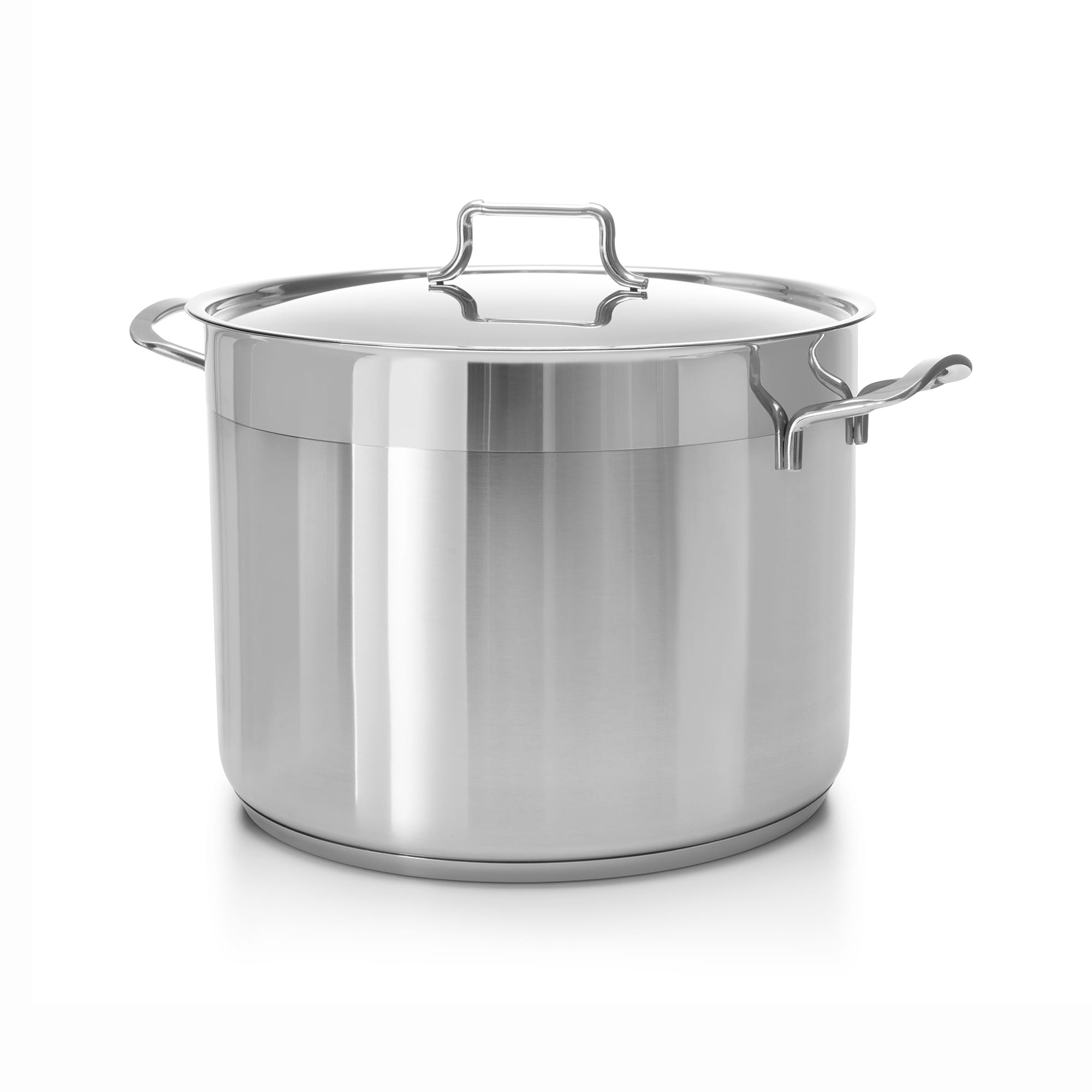

Organic acids, high quantities of which can be found in many fruits and vegetables, have a corrosive effect on pots and pans as atoms of iron, chrome, and nickel are released from the metal during cooking. However, after these initial uses, this effect is noticeably lessened. Polishing a stainless steel pan can leave behind a fine residue of oxidized steel chips, which can lead to a higher concentration of nickel being released from the pot or pan during the first few uses. The reason behind this increase could lie in the manufacturing process. The many studies on this topic have noted that a higher amount of nickel – up to 200 μg/l – is released when using brand new cookware, although this falls to a low level after a few uses. Nevertheless, there are some outlying cases where an increased amount of nickel release can be traced. This may seem like a high number, but when measured against the portion size of food actually consumed, the result is a comparatively meagre 0–10 μg. potatoes or a fruit compote) amounts to between 0–64 μg/kg. According to a study by Flint (1997), the nickel released by stainless steel pots and pans into various foods (e.g. There are multiple studies that deal with the release of nickel from cooking equipment, and from their results we can trace one common theme: albeit in relatively low amounts, nickel is released in the cooking process when using stainless steel pots and pans. Nickel-free 18/0 stainless steel, meanwhile, has yet to make a strong impression with consumers.

18/10 stainless steel (also known as type 304) is therefore the most popular type of cookware currently available on the market, accounting for four of every five pots or pans purchased over the counter. The nickel present makes the alloy more malleable and corrosion-resistant, and produces a smooth, shiny finish. You can determine the content of these separate elements by consulting the steel grade on the bottom of your pot or pan: 18/10 stainless steel contains 18% chrome and 10% nickel, while iron makes up the remainder. The stainless steel used in cookware sets is an alloy of iron, chrome, and nickel. ▲ Table 1: Nickel content and market share of the most popular cookware The widely used stainless steel varieties contain the largest concentration of nickel, while levels of nickel content are comparatively low in most other cookware materials (see Table 1). We have analyzed the effects of three types of kitchen utensils on your exposure to nickel: cookware (pots and pans), kettles, and taps.Ĭooking pots and pans can be made from a vast array of materials. Many common kitchen utensils contain nickel, and the potential danger they pose to consumers is an important question to consider, both for allergy sufferers and those without an allergy to nickel. In severe cases, however, symptoms can also develop through an excess of nickel in your diet. A nickel allergy is primarily caused by objects containing nickel, such as jewelry, buttons, or doorknobs, coming into direct contact with the skin.


 0 kommentar(er)
0 kommentar(er)
